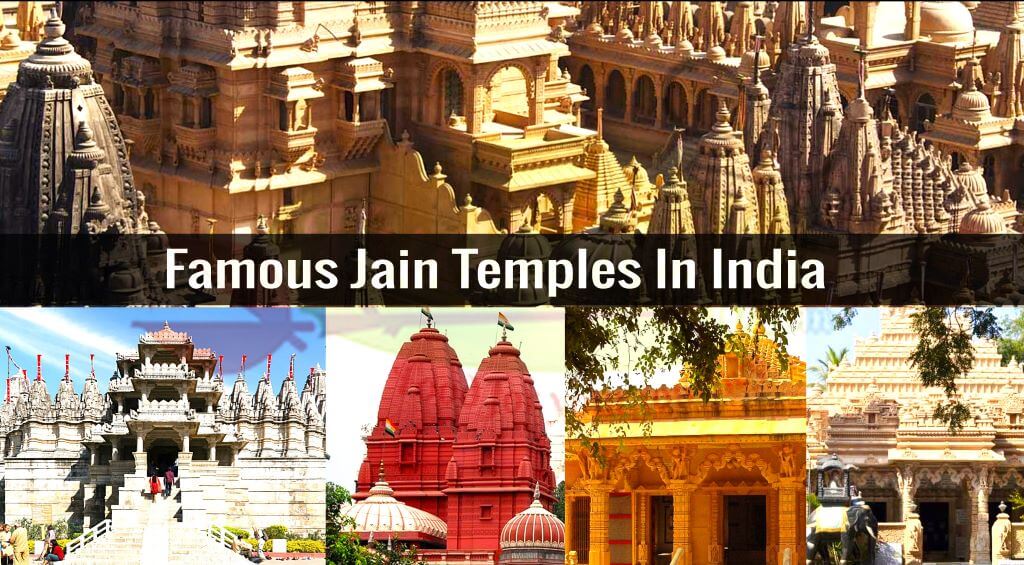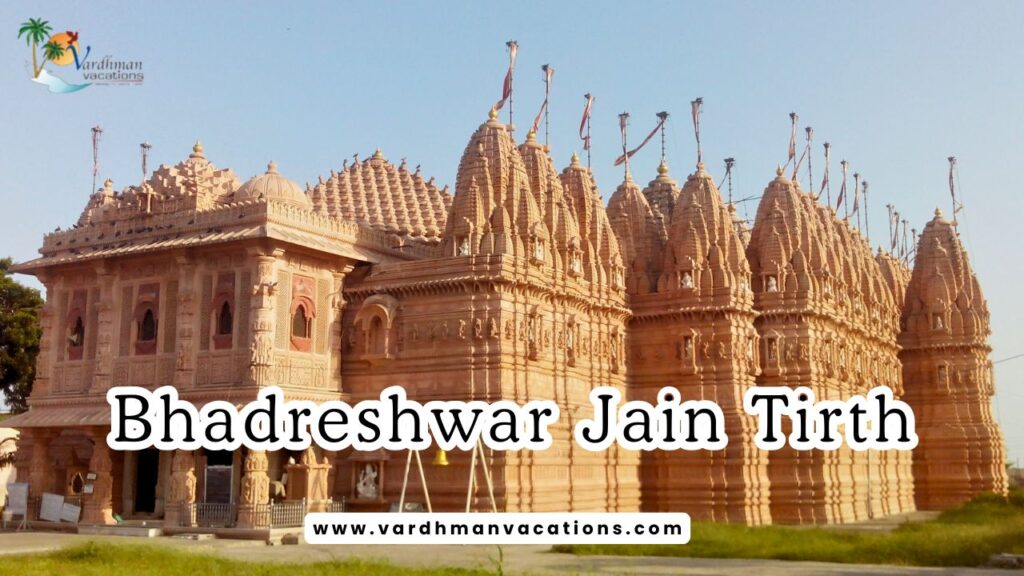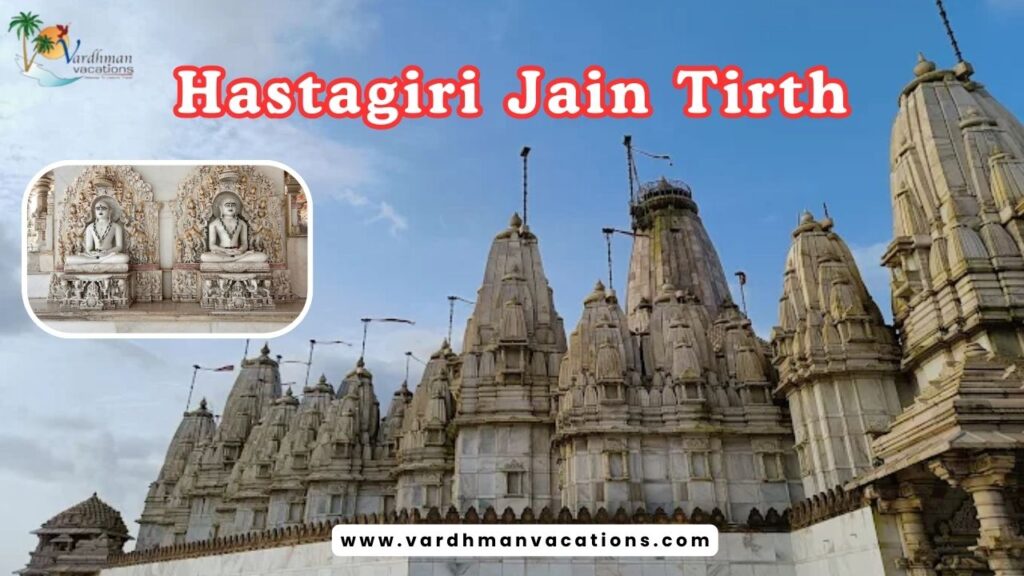India is a land of many faiths, and among the oldest is Jainism, a religion built on peace, compassion, and non-violence toward all living beings. To truly understand its spiritual essence and cultural depth, one must explore the best Jain temples in India, which serve not just as places of worship but as centers of meditation, learning, and timeless heritage.
These famous Jain temples and pilgrimage sites are architectural masterpieces, often crafted in gleaming white marble and adorned with intricate carvings that depict stories from Jain scriptures and the lives of Tirthankaras. Some rise majestically atop hills, others are carved within caves, while many stand peacefully in villages, radiating an aura of calm and devotion.
Every year, thousands of pilgrims and travelers visit these sites to seek blessings, meditate, or simply admire their artistry and tranquility. Cleanliness, discipline, and respect for traditions—such as removing footwear and avoiding leather items—are integral to visiting a Jain temple. For non-followers too, these temples offer a rare opportunity to experience spiritual calm, stunning Jain temple architecture, and serene natural surroundings.
In this blog, we will take you through 11 must-visit Jain temples and pilgrimage sites in India—from the colossal Bahubali statue at Shravanabelagola in Karnataka to the breathtaking hilltop temples of Palitana in Gujarat. Whether you are a pilgrim, a culture enthusiast, or a traveler seeking unique experiences, these sacred sites are sure to leave you inspired.
Top Jain Temples in India
Here is the list of 11 Jain Temples in India
Dilwara Jain Temples – Mount Abu, Rajasthan
The Dilwara Jain Temples in Mount Abu, Rajasthan, are among the most celebrated examples of Jain temple architecture in India. Built between the 11th and 13th centuries, this group of five temples may look simple from the outside, but their interiors are nothing short of breathtaking. Crafted entirely from white marble, every pillar, wall, and ceiling is covered with intricate carvings that showcase the skill of ancient artisans.
The most famous shrine here is the Vimal Vasahi Temple, dedicated to Lord Adinath. Its carvings are so delicate that the marble seems almost like lace or fabric rather than stone. The other temples are dedicated to different Tirthankaras, each with equally stunning details.
The temples are carefully maintained, offering a quiet and serene environment for visitors. Photography is not allowed inside, which helps preserve the artwork and maintain the sanctity of the place. For Jains, this is a sacred pilgrimage site. For travelers, it is an awe-inspiring example of India’s rich cultural and architectural heritage. A visit to Dilwara is not just a spiritual journey but also an artistic experience that leaves a lasting impression.
Shatrunjaya / Palitana Jain Temples – Gujarat
The Palitana Temples, located on Shatrunjaya Hill in Gujarat, are among the most sacred and awe-inspiring Jain pilgrimage sites in India. Spread across the hilltop are more than 860 intricately carved marble temples, each a masterpiece of devotion and craftsmanship. The main shrine is dedicated to Lord Adinath, the first Tirthankara, and holds immense spiritual significance for the Jain community.
Reaching the temples is itself a sacred journey. Pilgrims and visitors must climb around 3,800 stone steps to reach the summit. Though the climb is challenging, it is deeply rewarding—the panoramic views of the surrounding landscape and the serene atmosphere of the temples make it unforgettable. Jains believe that every devotee should attempt to visit Palitana at least once in their lifetime, making it a central part of Jain pilgrimage.
To preserve the sanctity of the site, vehicles and even cooking are not allowed on the hill. This ensures that the entire complex remains pure, peaceful, and free from modern disturbances. For pilgrims, Palitana is a place of deep spiritual fulfillment; for travelers, it is a breathtaking encounter with history, architecture, and devotion.
Ranakpur Jain Temple – Ranakpur, Rajasthan
Nestled in the serene valleys of the Aravalli Hills in Rajasthan, the Ranakpur Jain Temple is a remarkable blend of spirituality and architectural brilliance. Built in the 15th century, this temple is one of the most exquisite examples of Jain temple architecture in India and a must-visit destination for both pilgrims and travelers.
The temple is primarily dedicated to Lord Adinath, the first Tirthankara. Made entirely of white marble, it boasts intricate carvings on every pillar, ceiling, and wall. A standout feature is the 1,444 intricately carved pillars, each unique in design—no two pillars are alike. The temple’s four grand entrances symbolize Jainism’s welcoming nature, inviting devotees and visitors from all directions.
Even on hot days, the temple remains cool and peaceful. Sunlight filtering through carved windows illuminates the intricate artwork, creating a tranquil and almost ethereal atmosphere. Surrounded by lush greenery, the site offers the perfect setting for prayer, meditation, and quiet reflection.
Beyond its spiritual significance, Ranakpur is a treasure of Indian art and craftsmanship. Visitors, whether followers of Jainism or travelers interested in history and architecture, come here to admire its serene ambiance and stunning marble carvings. Truly, the Ranakpur Jain Temple is a gem among the best Jain temples in India, representing devotion, artistry, and timeless beauty.
Shravanabelagola (Gomateshwara) – Karnataka
Shravanabelagola, located in Karnataka, is one of the most revered Jain pilgrimage sites in India, famed for the colossal Gomateshwara (Bahubali) statue. Carved from a single block of granite over 1,000 years ago, the statue stands an impressive 57–58 feet tall, making it the largest free-standing monolithic statue in the world. It symbolizes peace, non-violence, and self-sacrifice, central tenets of Jain philosophy.
The statue is perched atop Vindhyagiri Hill, accessible by a climb of approximately 600 stone steps. The effort is rewarded with panoramic views and a serene, spiritual atmosphere that attracts devotees and travelers alike. The surrounding hills are dotted with smaller Jain temples, enhancing the sacred ambiance of the site.
Every 12 years, Shravanabelagola hosts the grand Mahamastakabhisheka festival, during which the statue is anointed with milk, saffron, and other holy substances. This spectacular event draws thousands of pilgrims from around the world, making it a unique blend of devotion, tradition, and cultural celebration.
Whether you are on a Jain pilgrimage tour or exploring India’s spiritual landmarks, Shravanabelagola offers an unforgettable experience of faith, history, and architectural marvel.
Sammed Shikharji (Parasnath Hill) – Jharkhand
Sammed Shikharji, located on Parasnath Hill in Jharkhand, is considered the holiest Jain pilgrimage site in India. Revered by both Digambara and Śvētāmbara Jains, it is believed that 20 out of the 24 Tirthankaras attained Moksha (liberation) here, making it a spiritually significant destination for followers of Jainism.
The temple complex is set amidst serene forests on the hill, offering a tranquil environment that complements its spiritual importance. Pilgrims undertake a sacred trek of approximately 27 kilometers, visiting numerous shrines along the route, each marking a holy site connected to the Tirthankaras. The journey is physically demanding, but devotees walk it with deep faith, experiencing the calm, pure air and profound silence that envelops the hill.
Sammed Shikharji is not just a pilgrimage for spiritual seekers; it is also a remarkable site showcasing ancient Jain heritage and devotion. The combination of natural beauty, sacred shrines, and spiritual significance makes it an unforgettable experience for pilgrims and travelers alike.
Sonagiri Jain Temples – Madhya Pradesh
The Sonagiri Temples, near Datia in Madhya Pradesh, are a serene and spiritually significant cluster of Jain temples in India. Known as the “Golden Peak,” Sonagiri is set on a small hill adorned with approximately 77–100 white marble temples, all gleaming in the sunlight and creating a magical, tranquil atmosphere.
The main shrine, Temple No. 57, is dedicated to Lord Chandraprabha, the eighth Tirthankara. Its tall spire, intricate carvings, and elevated location make it a stunning architectural marvel. Pilgrims, especially followers of the Digambara sect, ascend the hill barefoot, visiting each temple along the path. Many believe that saints and devotees, including King Nanganag Kumar and his followers, achieved Moksha (liberation) here, adding to the sacred aura of the site.
The combination of peaceful surroundings, quiet meditation spaces, and panoramic views of green fields and clear skies makes Sonagiri an ideal place for prayer and reflection. For travelers and devotees alike, it offers a rare experience where faith, nature, and architectural beauty converge, making it a must-visit on any Jain pilgrimage tour in India.
Kundalpur Jain Temple – Madhya Pradesh
The Kundalpur Jain Temple, also known as Bawangaja Jain Temple, is one of the most remarkable Jain temples in India, famous for its colossal statue of Lord Adinath, which ranks among the tallest Jain statues in the world. Nestled in the serene landscapes of Kundalpur, this temple is a perfect blend of spiritual significance and architectural grandeur.
The towering statue of Lord Adinath dominates the temple complex, inspiring awe among pilgrims and visitors alike. The temple itself offers a peaceful environment for prayer, meditation, and reflection, while also showcasing the intricate artistry and devotion characteristic of Jain architecture.
Kundalpur holds immense historical and religious importance, making it a must-visit destination for Jain devotees and travelers interested in India’s spiritual heritage. Its combination of breathtaking views, sacred ambiance, and monumental design ensures an unforgettable experience for all who visit.
Trilok Teerth Dham – Baghpat, Uttar Pradesh
Trilok Teerth Dham, located in Baghpat, Uttar Pradesh, is a modern yet spiritually significant Jain pilgrimage site in India. This contemporary temple complex is known for its unique architecture, symbolizing the three worlds (Trilok) in Jain cosmology. It has quickly become a prominent destination for both devotees and travelers seeking a blend of devotion and artistic marvel.
The centerpiece of the temple is the 31-foot tall idol of Lord Rishabhdev, one of the principal Tirthankaras, which draws visitors from across the region. The complex is thoughtfully designed, offering spaces for meditation, prayer, and spiritual learning, while maintaining the serenity expected of a sacred site.
Trilok Teerth Dham is easily accessible from Delhi, making it an ideal day trip for travelers interested in exploring Jain heritage in Northern India. With its combination of modern design, religious significance, and peaceful surroundings, it provides a unique experience that connects visitors with both Jain philosophy and culture.
Hanumantal Bada Jain Mandir – Jabalpur, Madhya Pradesh
Hanumantal Bada Jain Mandir, located in Jabalpur, Madhya Pradesh, is one of the most prominent Jain temples in India, celebrated for its architectural elegance and spiritual significance. Over 300 years old, this historic temple sits beside the serene Hanumantal Lake, creating a tranquil and picturesque setting for devotees and visitors alike.
Built on a raised platform, the temple complex features a unique blend of local and traditional Jain architectural styles. Inside, numerous smaller shrines house idols of different Tirthankaras, while the main sanctum enshrines Lord Shantinath. The walls and ceilings are adorned with colorful paintings and intricate designs, reflecting both devotion and craftsmanship.
The temple comes alive during major Jain festivals like Mahavir Jayanti and Paryushan, attracting devotees from across the region. Its peaceful lakeside location adds to the spiritual ambiance, making it an ideal spot for meditation, prayer, and quiet reflection. For travelers and pilgrims exploring Jain heritage in central India, Hanumantal Bada Jain Mandir offers a perfect combination of history, art, and devotion, making it a must-visit destination.
Shri Mahavir Ji Temple – Karauli, Rajasthan
Shri Mahavir Ji Temple, located in the Karauli district of Rajasthan, is one of the most revered Jain temples in India. Dedicated to Lord Mahavira, the 24th Tirthankara, the temple is crafted from white marble and offers a serene, clean, and spiritually uplifting atmosphere for devotees and visitors alike.
The main idol of Lord Mahavira, made of sandstone, was discovered buried in the soil centuries ago and is considered highly sacred and powerful. The temple complex provides facilities for pilgrims, including guesthouses and a bhojanalaya (dining hall), ensuring a comfortable and meaningful visit.
Every year, a grand fair is held in April, attracting thousands of devotees. The festival features a vibrant procession in which the idol is carried on a beautifully decorated chariot, creating a spiritually charged and festive environment. For those seeking a place for prayer, reflection, or a deeper connection with Jain teachings and values, Shri Mahavir Ji Temple stands out as a must-visit destination in Rajasthan.
Girnar Jain Temples – Junagadh, Gujarat
No Jain pilgrimage tour in India is complete without visiting the Girnar Jain Temples in Junagadh, Gujarat. Situated atop the sacred Girnar Hill, these temples are among the most revered sites for Jains. It is believed that Lord Neminath, the 22nd Tirthankara, attained Moksha (liberation) on this hill, making the entire area profoundly holy.
The climb to the temples involves ascending over 10,000 steps, a journey of devotion that rewards pilgrims with breathtaking views of forests, hills, and the city below. Along the way, travelers encounter numerous temples built at different levels, each reflecting centuries of architectural evolution. The main temple, dedicated to Lord Neminath, is constructed from black stone and houses a serene idol that inspires reverence and calm.
As devotees ascend, the environment becomes progressively quieter and more peaceful. Both Digambara and Śvētāmbara Jains visit this sacred site, especially during the Kartik month (November), when a large fair and yatra draw thousands of pilgrims. Girnar is not merely a collection of temples—it embodies faith, perseverance, and spiritual strength. Visiting this sacred hill leaves a lasting impression on both the heart and mind, making it a must-visit destination for anyone exploring Jain heritage in India.
Practical Travel Tips for Visiting Jain Temples
Visiting Jain temples in India is a spiritual and cultural experience. To make the most of your pilgrimage or tour, keep these travel tips in mind:
- Dress & behaviour: Modesty and decorum are important. Cover shoulders and knees; remove shoes when entering sanctums; speak quietly and avoid touching idols unless guided.
- Photography & mobile rules: Many temples restrict photography inside sanctums. Follow signage and ask temple staff if unsure.
- Best time to visit: October–March is generally pleasant for most temple sites in North and West India; southern sites can be best in cooler months too. Special festivals (Mahavir Jayanti, Paryushan, Mahamastakabhisheka at Shravanabelagola) are spiritually significant but can be crowded — plan ahead if you want to attend.
- Pilgrimage pacing: Hilltop tirthas (Palitana, Shikharji, Shravanabelagola, Sonagiri) require physical effort. Start early, carry water, and wear comfortable footwear (or be prepared to go barefoot for parts of the ritual if you’re participating devoutly).
- Local guides & timing: Hiring a local guide or joining a small-group tour often adds rich historical context and helps with logistics (timings, restricted areas, where to leave footwear, nearby eateries).
Final Thoughts & Planning Help
India’s Jain temples are more than just places of worship—they are sanctuaries of peace, devotion, and architectural brilliance. From the marble masterpieces of Dilwara and Ranakpur to the towering statues of Shravanabelagola and Kundalpur, each site tells a story of faith, artistry, and centuries of spiritual tradition. Whether you are a devotee, traveler, or cultural enthusiast, visiting these 11 Jain pilgrimage sites offers a unique blend of spirituality, history, and tranquility.
FAQs About Visiting Jain Temple in India
For many Jains, Shikharji is the holiest (site of many Tirthankaras’ liberation). For architectural marvels, Dilwara and Ranakpur are unmatched; for scale and intensity of pilgrimage, Palitana and Shravanabelagola are major draws.
Yes, most Jain temples welcome visitors of all faiths, but they must follow temple rules such as removing footwear and avoiding leather items.
The ideal time is during the cooler months, from October to March. Major festivals like Mahavir Jayanti, Paryushan, and Mahamastakabhisheka attract large crowds.
Mahamastakabhisheka occurs every 12 years — the last was in 2018 and the next large anointing is scheduled for 2030 (plan well in advance if you want to attend).
Yes, temples like Palitana, Girnar, and Shravanabelagola require climbing steps, which is part of the spiritual experience.
Dilwara Temples, Ranakpur Temple, and Palitana Temples are renowned for intricate marble carvings and architectural brilliance.






